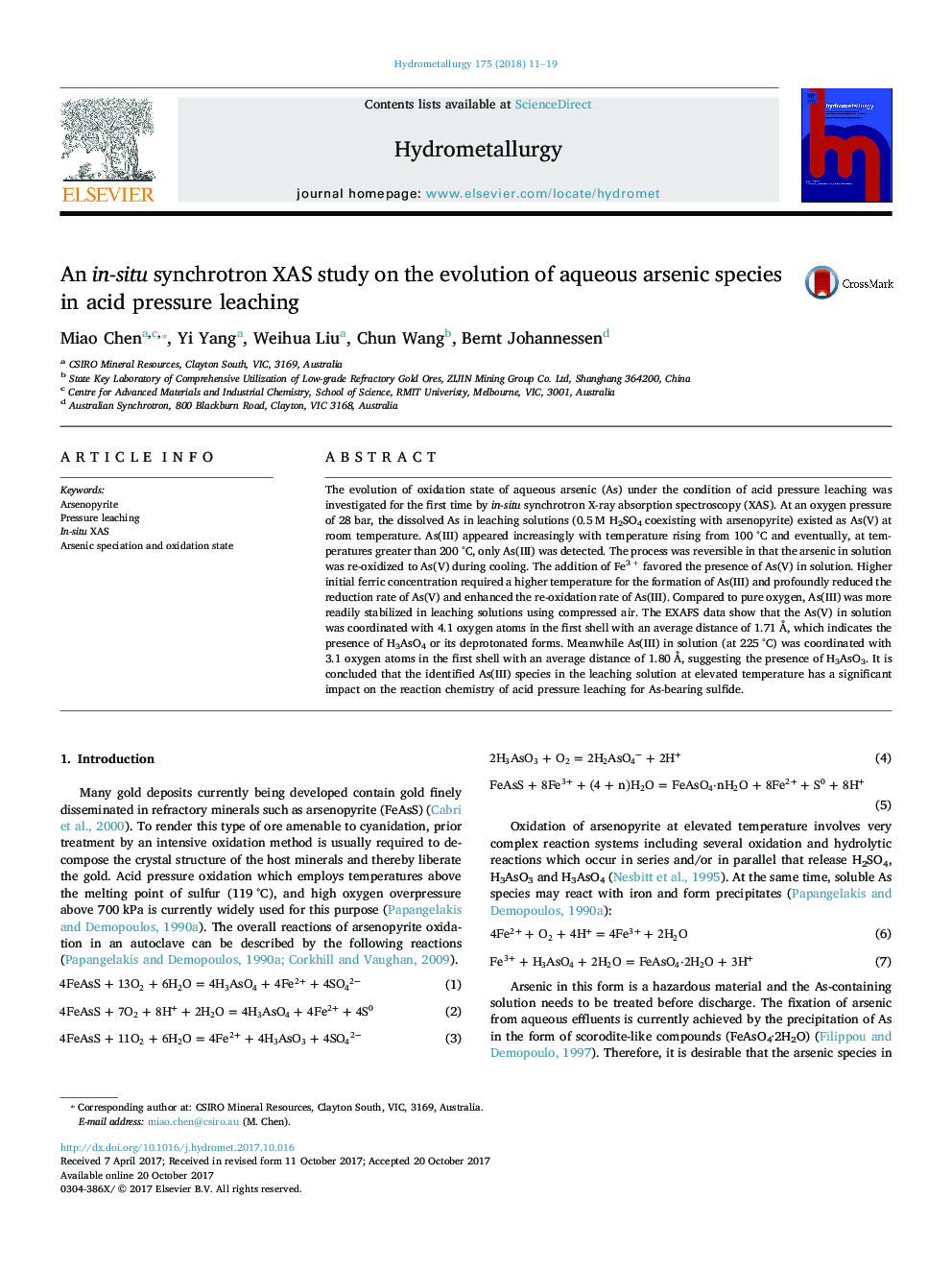| Article ID | Journal | Published Year | Pages | File Type |
|---|---|---|---|---|
| 6659031 | Hydrometallurgy | 2018 | 9 Pages |
Abstract
The evolution of oxidation state of aqueous arsenic (As) under the condition of acid pressure leaching was investigated for the first time by in-situ synchrotron X-ray absorption spectroscopy (XAS). At an oxygen pressure of 28 bar, the dissolved As in leaching solutions (0.5 M H2SO4 coexisting with arsenopyrite) existed as As(V) at room temperature. As(III) appeared increasingly with temperature rising from 100 °C and eventually, at temperatures greater than 200 °C, only As(III) was detected. The process was reversible in that the arsenic in solution was re-oxidized to As(V) during cooling. The addition of Fe3 + favored the presence of As(V) in solution. Higher initial ferric concentration required a higher temperature for the formation of As(III) and profoundly reduced the reduction rate of As(V) and enhanced the re-oxidation rate of As(III). Compared to pure oxygen, As(III) was more readily stabilized in leaching solutions using compressed air. The EXAFS data show that the As(V) in solution was coordinated with 4.1 oxygen atoms in the first shell with an average distance of 1.71 Ã
, which indicates the presence of H3AsO4 or its deprotonated forms. Meanwhile As(III) in solution (at 225 °C) was coordinated with 3.1 oxygen atoms in the first shell with an average distance of 1.80 Ã
, suggesting the presence of H3AsO3. It is concluded that the identified As(III) species in the leaching solution at elevated temperature has a significant impact on the reaction chemistry of acid pressure leaching for As-bearing sulfide.
Keywords
Related Topics
Physical Sciences and Engineering
Chemical Engineering
Chemical Engineering (General)
Authors
Miao Chen, Yi Yang, Weihua Liu, Chun Wang, Bernt Johannessen,
